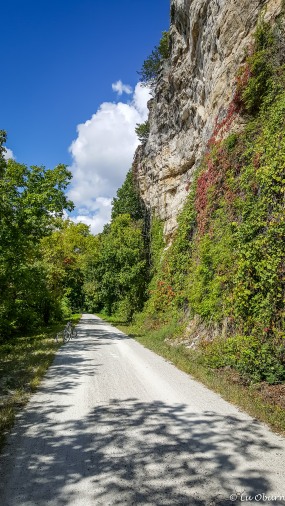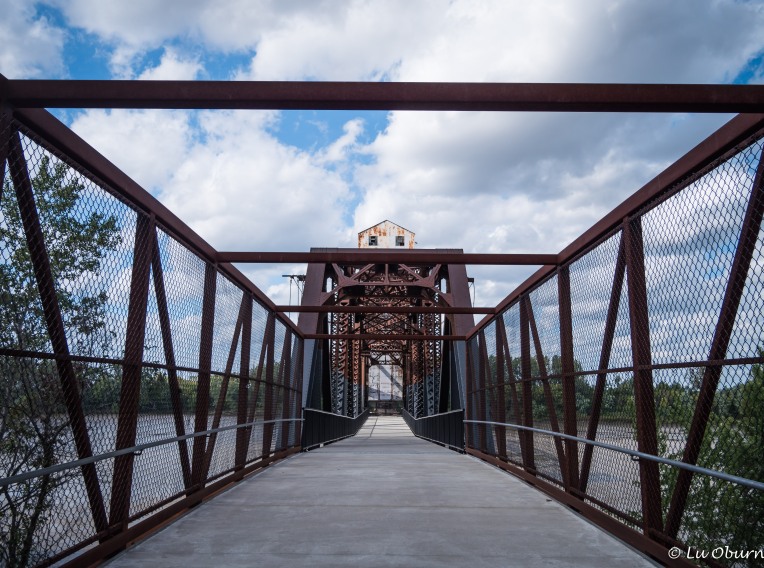 Over 30 years ago, a group of like-minded individuals came together, railroad history buffs, conservationists, walking and biking enthusiasts, those dedicated to the concept of connecting communities, all with one common vision, to transform discarded railroad beds into something appealing, something useful, a place to build healthy spaces for healthy people. The initial seeds planted were spreading, so much so that these individuals felt a dedicated organization was necessary to foster their growth. This is where the non-profit Rails-to-Trails Conservancy (RTC) was founded, in February, 1986, based today in Washington, DC. Their mission is to work with communities across America to convert unused railroad beds into a nationwide trail system, shared by walkers, runners, bicyclists, and wheelchairs alike.
Over 30 years ago, a group of like-minded individuals came together, railroad history buffs, conservationists, walking and biking enthusiasts, those dedicated to the concept of connecting communities, all with one common vision, to transform discarded railroad beds into something appealing, something useful, a place to build healthy spaces for healthy people. The initial seeds planted were spreading, so much so that these individuals felt a dedicated organization was necessary to foster their growth. This is where the non-profit Rails-to-Trails Conservancy (RTC) was founded, in February, 1986, based today in Washington, DC. Their mission is to work with communities across America to convert unused railroad beds into a nationwide trail system, shared by walkers, runners, bicyclists, and wheelchairs alike.
Since the RTC’s start, more than 1,800 rail-trails have been developed across the country, spread across all 50 states, totaling more than 21,000 miles, with many other projects on the drawing table. These miles of now paved or crushed stone trails, once old rail beds, have been transformed into beautiful paths, almost always flat and almost always scenic – think mountains, rivers, and bridges.
This concept has become so popular, used by so many, that in 2007 the RTC decided to recognize model rail-trails across the nation, through its Rail-Trail Hall of Fame. Those trails selected are based on a number of qualities, such as usage, trail and trailside amenities, historical significance, scenic attributes, community connections, among others. Their first inductee, in July of 2007, was the Great Allegheny Passage, 150 miles of trail running from Cumberland MD to Pittsburgh, PA, affectionately dubbed the GAP.
We have only had the opportunity to bike on a few of these wonderful trails, and have toyed with the idea of checking more of these off our list. Terry did some research and discovered that one of the more well-known, the Katy Trail, was nearby our midwestern travel route, so we made a detour and found ourselves in a state we have rarely visited, Missouri.
The Katy Trail, the longest rail-trip system in the country, at about 240 miles, runs almost the entire width of Missouri, east-to-west, following a portion of the Lewis and Clark National Historic Trail. It follows an old rail line for the Missouri, Kansas, and Texas railroad, the MKT for short, or even shorter, the KT, hence the name Katy (phonetic version).
We positioned ourselves in the little town of Rocheport, close by two of the favorite spots along the trail, towering bluffs overlooking the Missouri River and the V-shaped petroglyph on a cave east of the town. We were only able to bike 50 miles of the Katy before the weather changed, bringing in rain, but the section we were on ran along the Missouri River and those towering bluffs, alongside deep woods and open fields and meadows, and through tiny towns. We met an enthusiastic group biking the entire length, who invited us to tag along. Had we not had previous commitments, we would have gladly joined them.
Many rural communities along the length of the Katy Trail have been resuscitated since its completion. This trail passes by more than 40 of these small towns. Rocheport, which once offered only a few antique stores, is now a recreational destination, sporting restaurants, B&B’s and even a winery, which we visited. In fact, I have read that you can find several vineyards just off the trail. In September of 2007 the Katy Trail became the second member of the Rail-Trail Hall of Fame.
Riding the Katy Trail and reading more about how the rail-trails system began has inspired us to experience more of them. Before the Katy, we had only ridden three others – the Bizz Johnson Trail, in Susanville, CA, the B&O Trail, in Brownsburg, IN (in its infancy), and 7 Capital Crescent Trail, in Washington DC.
“Great rail-trails very seldom sit still. They branch out; they bridge; they knit together communities.”
Have you ridden/walked any of these incredible trails crisscrossing the US? How about sharing your experience? Photos are always welcome. 🙂















